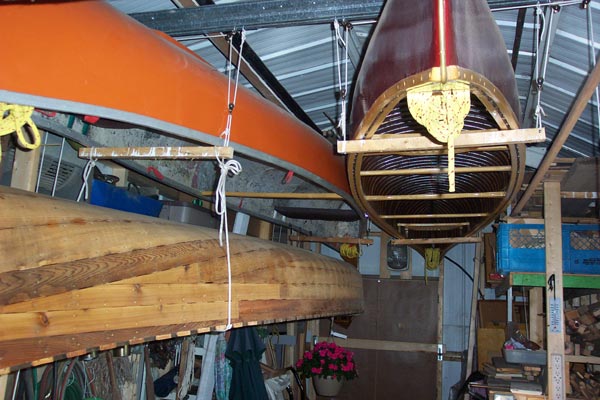When suspending a canoe from anything, take into account the weight of the canoe and the force needed to pull down to lift it into position.
I have used the method shown in the photos for several years with good results. I am short, so lifting the canoes into a position high enough to park a vehicle or walk under it needs pulleys,etc.
This method is safe, since you are in control of the whole canoe when raising or lowering it, and can stand out of the way while you are doing it. Try to position the "slings" about 25% in from the ends of the canoe.
